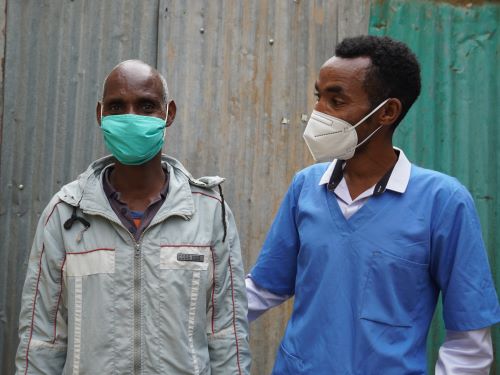Sexual Behavior and Vulnerability to HIV Infection among Seasonal Migrant Laborers In Metema District, Northwest Ethiopia: A Cross-Sectional Study
Sexual Behavior and Vulnerability to HIV Infection among Seasonal Migrant Laborers In Metema District, Northwest Ethiopia: A Cross-Sectional Study
Abstract
Background
Poor socio-economic conditions fuel seasonal migration of adult males from Northwestern Ethiopia, but behavioral and other migration-related changes increase their vulnerability to HIV. This study examined risky sexual behaviors and associated factors that may lead to increased HIV infection vulnerability among migrant laborers in Metema District, Ethiopia.
Methods
A community-based cross-sectional study was conducted from July 8–18, 2013 at farms with migrant laborers. We enrolled 756 participants through multistage random sampling.
Results
Of the participants, 582 (77%) migrant workers had had sexual intercourse in their lifetimes and 68% (397/582) reported non-marital sexual intercourse in the preceding six months. Of these, 74% reported sexual intercourse with commercial sex workers (CSWs), 49% reported having transactional sex, 49% reported unprotected sexual intercourse with CSWs, and 69% reported multiple sexual partners in the preceding six months (mean = 2.9 ± 0.7). Being aged between 20 and 29 years, aged 30 years or older, having received of HIV prevention information in the preceding six months, and staying longer on the farm were factors significantly associated with condom use at last non-marital sexual intercourse. Teenaged respondents aged , those who had not received HIV information in the preceding six months, or those who had stayed on the farm for ≤2 months were less likely to have used condoms at their last non-marital sexual intercourse. Moreover, having daily income above US$5, paying for most recent sexual intercourse, and drinking alcohol before last sexual intercourse were significantly associated with having multiple (≥2) sexual partners during the preceding six months.
Conclusions
Seasonal laborers commonly exhibit risky sexual behaviors likely to increase their vulnerability to HIV infection. Unprotected and multiple sex partners in these populations pose transmission risks to seasonal laborers and onward to their wives and future sexual partners. The findings support the need for targeted HIV prevention campaigns designed for seasonal workers and their sexual partners.
